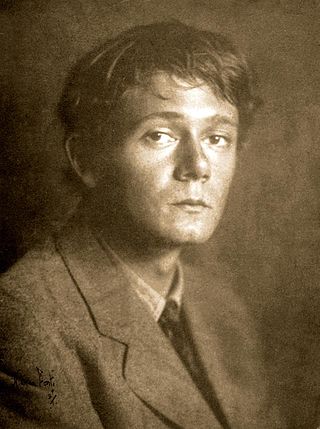
Clark Ashton Smith was an American writer and artist. He achieved early local recognition, largely through the enthusiasm of George Sterling, for traditional verse in the vein of Swinburne. As a poet, Smith is grouped with the West Coast Romantics alongside Joaquin Miller, Sterling, and Nora May French and remembered as "The Last of the Great Romantics" and "The Bard of Auburn". Smith's work was praised by his contemporaries. H. P. Lovecraft stated that "in sheer daemonic strangeness and fertility of conception, Clark Ashton Smith is perhaps unexcelled", and Ray Bradbury said that Smith "filled my mind with incredible worlds, impossibly beautiful cities, and still more fantastic creatures".

Sword and sorcery (S&S) is a subgenre of fantasy characterized by sword-wielding heroes engaged in exciting and violent adventures. Elements of romance, magic, and the supernatural are also often present. Unlike works of high fantasy, the tales, though dramatic, focus on personal battles rather than world-endangering matters. Sword and sorcery commonly overlaps with heroic fantasy.

Eric Rücker Eddison, CB, CMG was an English civil servant and author, writing epic fantasy novels under the name E. R. Eddison. His notable works include The Worm Ouroboros (1922) and the Zimiamvian Trilogy (1935–1958).
Heroic fantasy is a subgenre of fantasy in which events occur in a world where magic is prevalent and modern technology is nonexistent. The setting may be entirely fictitious in nature or based upon Earth with some additions. Unlike dark fiction, it provides a setting in which "all men are strong, all women beautiful, all life adventurous, and all problems simple". This means that adventures based in heroic fantasy are unlikely to mention any wider problems that cannot be fixed by a quest. Characters within heroic fantasy are likely to be underdogs of humble origin who are placed in situations forcing them to act in a heroic manner, past what is expected of them.

Fantasy literature is literature set in an imaginary universe, often but not always without any locations, events, or people from the real world. Magic, the supernatural and magical creatures are common in many of these imaginary worlds. Fantasy literature may be directed at both children and adults.

Elements of the supernatural and the fantastic were an element of literature from its beginning. The modern genre is distinguished from tales and folklore which contain fantastic elements, first by the acknowledged fictitious nature of the work, and second by the naming of an author. Works in which the marvels were not necessarily believed, or only half-believed, such as the European romances of chivalry and the tales of the Arabian Nights, slowly evolved into works with such traits. Authors like George MacDonald created the first explicitly fantastic works.
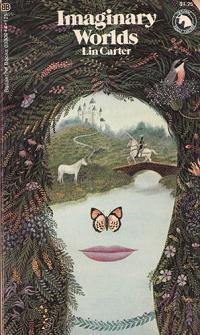
The Ballantine Adult Fantasy series was an imprint of American publisher Ballantine Books. Launched in 1969, the series reissued a number of works of fantasy literature which were out of print or dispersed in back issues of pulp magazines, in cheap paperback form—including works by authors such as James Branch Cabell, Lord Dunsany, Ernest Bramah, Hope Mirrlees, and William Morris. The series lasted until 1974.
Leslie Barringer (1895–1968) was an English editor and author of historical novels and historical fantasy novels, best known for the latter.

The Swordsmen and Sorcerers' Guild of America or SAGA was an informal group of American fantasy authors active from the 1960s through the 1980s, noted for their contributions to the "Sword and Sorcery" kind of heroic fantasy, itself a subgenre of fantasy. When it developed a serious purpose that was to promote the popularity and respectability of Sword and Sorcery fiction.

Joris of the Rock is a fantasy novel by Leslie Barringer, the second book in his three volume Neustrian Cycle. The book was first published in the United Kingdom by Heinemann in 1928; an American edition followed from Doubleday in 1929. Its significance was recognized by its republication by the Newcastle Publishing Company as the ninth volume of the celebrated Newcastle Forgotten Fantasy Library series in September, 1976. The Newcastle edition was reprinted by Borgo Press in 1980 and 2010.
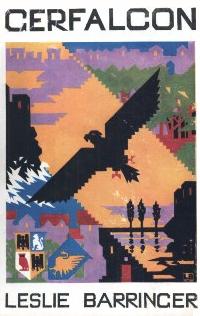
Gerfalcon is a fantasy novel by Leslie Barringer, the first book in his three volume Neustrian Cycle. The book was first published in 1927 by Heinemann in the United Kingdom and Doubleday in the United States. Its significance was recognized by its republication in 1973 by Tom Stacey in the UK and in March, 1976 by the Newcastle Publishing Company in the US, as the seventh volume of its celebrated Newcastle Forgotten Fantasy Library series. This Newcastle edition was reprinted twice, once by Newcastle itself in 1977 and once by Borgo Press in 1980.
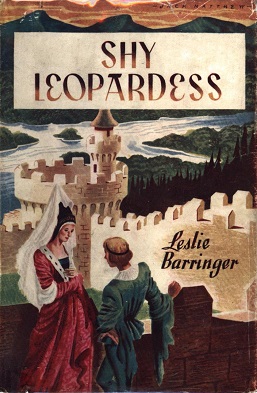
Shy Leopardess is a fantasy novel by Leslie Barringer, the third and last book in his three volume Neustrian Cycle. The book was first published in the United Kingdom by Methuen in 1948. Its significance was recognized by its republication in the United States by the Newcastle Publishing Company as the thirteenth volume of the Newcastle Forgotten Fantasy Library series in October, 1977. The Newcastle edition was reprinted by Borgo Press in 1980.
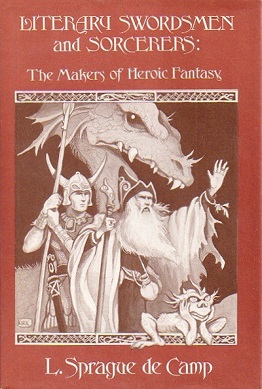
Literary Swordsmen and Sorcerers: The Makers of Heroic Fantasy is a work of collective biography on the formative authors of the heroic fantasy genre by L. Sprague de Camp (1907-2000), first published in 1976 by Arkham House in an edition of 5,431 copies. Nine chapters (2-10) are revisions from a series of ten articles, also titled "Literary Swordsmen and Sorcerers," that initially appeared in the magazine Fantastic and the fanzine Amra between 1971 and 1976. A French edition was issued in May 2010 under the title Les pionniers de la fantasy, and an ebook edition was issued in June 2014 by Gateway/Orion.
The Story of the Glittering Plain is an 1891 fantasy novel by William Morris, perhaps the first modern fantasy writer to unite an imaginary world with the element of the supernatural, and thus the precursor of much of present-day fantasy literature. It is also important for its exploration of the socialist themes that interested Morris.
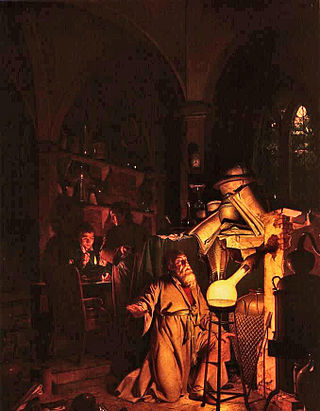
Elements of the supernatural and the fantastic were an element of literature from its beginning, though the idea of a distinct genre, in the modern sense, is less than two centuries old.

The Wood Beyond the World is a fantasy novel by William Morris, perhaps the first modern fantasy writer to unite an imaginary world with the element of the supernatural, and thus the precursor of much of present-day fantasy literature. It was first published in hardcover by Morris's Kelmscott Press, in 1894. The book's importance in the history of fantasy literature was recognized by its republication by Ballantine Books as the third volume of the Ballantine Adult Fantasy series in July, 1969. The Ballantine edition includes an introduction by Lin Carter.

The Sundering Flood is a fantasy novel by British writer William Morris, perhaps the first modern fantasy writer to unite an imaginary world with the element of the supernatural, and thus the precursor of much of present-day fantasy literature. The Sundering Flood was Morris' last work of fiction, completed only in rough draft, with the ending dictated from his deathbed. It was edited posthumously by his daughter May into finished form for publication and published in 1897.

A Tale of the House of the Wolfings and All the Kindreds of the Mark is a fantasy novel by William Morris, perhaps the first modern fantasy writer to unite an imaginary world with the element of the supernatural, and thus the precursor of much of present-day fantasy literature. It was first published in hardcover by Reeves and Turner in 1889.
Child Christopher and Goldilind the Fair is a fantasy novel by William Morris, perhaps the first modern fantasy writer to unite an imaginary world with the element of the supernatural, and thus the precursor of much of present-day fantasy literature. It was first published in hardcover by Morris' Kelmscott Press in 1895. Its importance in the history of fantasy literature was recognized by its republication by the Newcastle Publishing Company as the twelfth volume of the celebrated Newcastle Forgotten Fantasy Library in April, 1977.
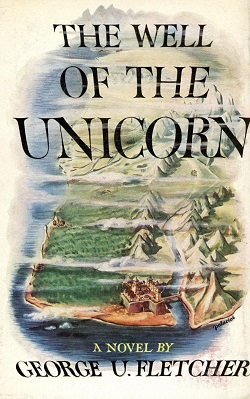
The Well of the Unicorn is a fantasy novel by the American writer Fletcher Pratt. It was first published in 1948, under the pseudonym George U. Fletcher, in hardcover by William Sloane Associates. All later editions have appeared under the author's actual name with the exception of the facsimile reprint issued by Garland Publishing in 1975 for its Garland Library of Science Fiction series. The novel was first issued in paperback in 1967 by Lancer Books, which reprinted it in 1968; subsequent paperback editions were issued by Ballantine Books. The first Ballantine edition was in May 1976, and was reprinted three times, in 1979, 1980, and 1995. The most recent edition was a trade paperback in the Fantasy Masterworks series from Gollancz in 2001. The book has also been translated into German, and into Russian in 1992.
















